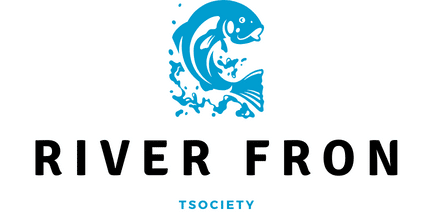How to Design an Accessible Workplace for Disabled Employees in UK Companies?

In the wake of an increasingly inclusive society, many businesses are striving to ensure that their workplaces cater to the needs of all employees, including those with disabilities. Designing an accessible workplace is no longer just a legal requirement or an act of goodwill, but a sound business strategy that fosters diversity, inclusion, and productivity. Let’s delve into how UK companies can design an accessible workplace for disabled employees.
Understanding Disability and Accessibility in the Workplace
While disability can appear in various forms – physical, intellectual, sensory, or mental health-related – it essentially refers to an impairment that may restrict an individual’s ability to perform certain tasks. In the context of a workplace, this might mean limited mobility, sensory issues, or barriers to communication and cognitive functioning.
Also to discover : How Can UK Fitness Studios Leverage Virtual Reality for At-Home Workouts?
Accessibility, on the other hand, means providing suitable access and support to enable individuals with disabilities to work effectively. It’s about ensuring that your office is equipped with the necessary facilities and equipment, and your work processes are flexible enough to accommodate the different needs of your staff. Understanding these concepts is the first step towards designing an inclusive and accessible workplace for disabled employees.
The Legal Framework for Workplace Accessibility in the UK
The Equality Act 2010 compels UK employers to provide reasonable adjustments for disabled staff. This could include modifying the physical work environment, offering flexible working hours, or providing specialist equipment. Failure to comply with these provisions could lead to discrimination claims.
In parallel : Common legal problems solved with Rocket Lawyer
However, beyond simply meeting legal requirements, many businesses are recognizing the immense value that disabled employees bring, such as unique perspectives and resilience. Thus, creating an accessible workplace becomes a strategic move that enables these companies to attract and retain a diverse workforce.
Practices for Developing an Accessible Physical Environment
The first aspect of making a workplace accessible for disabled people is the physical environment. The aim here is to remove any barrier that may hinder the movement, access, and functionality of disabled employees.
This can involve several modifications, such as installing ramps for wheelchair users, placing Braille signage for visually impaired employees, or setting up quiet zones for those with sensory disabilities. Lighting and colour contrast can be adjusted to help visually impaired employees navigate the workplace. Also, ensuring that restrooms, corridors, and doorways are wide enough for wheelchair users is crucial.
Enhancing Workplace Accessibility through Technology
While physical modifications are imperative, technology plays a crucial role in creating an inclusive workplace. Assistive technologies like screen readers, speech recognition software, or adjustable workstations can significantly enhance accessibility.
Moreover, digital accessibility should be a priority. Ensure that your company’s website, applications, and digital documents are accessible, implying they can be used and understood by all employees, regardless of their disability. This may involve providing alternative text for images, using accessible fonts, and ensuring that all functionalities can be accessed with a keyboard for those who cannot use a mouse.
Cultivating an Inclusive Workplace Culture
While infrastructure and technology are crucial, creating an accessible workplace goes beyond the physical and digital spheres. It involves fostering an inclusive culture where disabled people feel valued, respected, and supported.
Employers can promote inclusion by providing disability awareness training to all staff, encouraging open dialogue about disabilities, and implementing inclusive hiring and promotion practices. Moreover, managers should be trained on how to provide effective support to disabled employees and adapt their management style to different needs.
In the journey towards inclusivity, your company should ensure that disabled employees have equal opportunities to engage in social events, professional development, and decision-making processes.
Remember, accessibility is not just about physical or digital changes; it embodies a broader commitment to inclusion and equality. Designing an accessible workplace is about acknowledging and valuing the diversity among your employees and ensuring that everyone can thrive in your business environment. By doing so, you are not just complying with the law or ticking a corporate responsibility box; you are also enhancing your workforce’s diversity, unlocking new potential and driving your business forward.
Implementing Health and Safety Measures for Disabled Employees
In any workplace, health and safety measures are crucial, but they must be more specifically tailored when considering disabled employees. Employers should consider the specific needs of their employees with disabilities when planning safety protocols. Any potential hazards, emergency evacuation procedures, or potential dangers should be carefully reviewed and a plan should be put in place to minimize risks.
For instance, if a disabled person is a wheelchair user, it must be ensured that they can evacuate the building safely in the event of an emergency. This might mean planning for specialist evacuation chairs or providing additional training to other employees to assist in the event of an emergency.
Mental health, often an overlooked aspect of disability, needs equal attention. The workplace should foster an environment that supports mental well-being. This could mean providing mental health training to staff, implementing stress management strategies, or providing access to mental health professionals.
In the workplace, health and safety precautions often require collaboration between employers, health and safety officers, and the disabled employees themselves. Their first-hand experience can provide valuable insights into the adjustments needed. A commitment to health and safety not only prevents potential harm but also demonstrates a dedication to creating a disability friendly environment that values every employee’s wellbeing.
Providing Flexible Working Options for Disabled Employees
Flexible working arrangements can be a significant factor in creating an accessible workplace for disabled employees. A rigid 9 to 5 schedule might pose challenges to some disabled people due to health conditions, medical appointments, or fatigue. Providing the option to work flexible hours, part-time, or remotely, can make a huge difference in a disabled person’s ability to work effectively.
Remote working can be a viable option for those who might find commuting challenging. However, it’s important to ensure that remote working doesn’t lead to isolation. Regular communication, digital accessibility, and virtual social events can help maintain a sense of involvement and community.
Furthermore, flexible working arrangements can also aid individuals with disabilities who may need frequent breaks during the day. It can also provide an opportunity to work during the hours when they feel most productive, leading to increased job satisfaction and overall productivity.
Flexibility also extends to job roles. Where possible, companies could consider job carving – creating a position that caters to the unique skills and abilities of a disabled person, or job sharing – where two people share the responsibilities of one job. By embracing such practices, companies ensure they are making reasonable adjustments to the traditional working environment, thereby empowering disabled employees to contribute to the maximum of their abilities.
Conclusion
Designing an accessible workplace for disabled employees in UK companies requires a comprehensive approach. It’s not just about making physical changes to the workplace or providing assistive technology, though these are significant aspects. It’s about fostering an inclusive culture, implementing flexible working arrangements, considering health and safety measures specifically for disabled people, and making necessary legal reasonable adjustments.
All these efforts demonstrate not only a company’s compliance with the Equality Act 2010 but its commitment to disability inclusion. By considering the needs of employees with disabilities in all aspects of the working environment, companies can ensure a disability friendly workplace where everyone has an equal opportunity to thrive and contribute. This isn’t just the law – it’s good business practice, and it’s the right thing to do.
